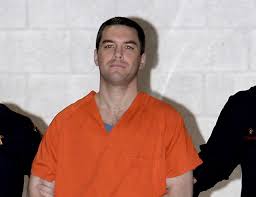The Ohio death penalty has been in existence for a very long time. Public hangings carried out by individual counties were the method of execution up until 1885.
The Ohio Penitentiary in Columbus became the new location for death row and executions in 1885.
Ohio executed 312 men and three women in the electric chair for the first time that year. Donald Reinbolt was the final victim of the 1963 electric chair execution.
What is the death penalty in Ohio?
According to the Death Penalty Information Center, Ohio is one of 27 states with the death penalty and more than 130 inmates on death row.
The death penalty deters homicide and other capital offences in the future. To prevent potential criminals from acting illegally, society has long utilized punishment. The death sentence is the toughest punishment available to deter murder because society has the greatest interest in doing so.
However, executions at the Southern Ohio Correctional Facility in Lucasville have been on hiatus in the state since 2018.
That’s because drug manufacturers have threatened to stop selling their products to the government in general, not just the ones used in executions if Ohio uses their medications for fatal injections.
Notable cases
Lockett Sandra
For her role in a robbery and murder, Sandra received was sentenced to death. At the time, Ohio law permitted judges in death penalty cases to examine only three mitigating considerations.
If none of those elements were present in a case, the offender had to face the death penalty. The Supreme Court heard Lockett’s case. The Supreme Court ruled in Lockett v. Ohio (1978) that the sentencer in a capital case “shall not be barred from considering, as a mitigating factor, any aspect of a defendant’s character or record, as well as any of the circumstances of the offense that the defendant offers as a basis for a sentence less than death.” Lockett’s conviction was reversed.
Richard Cooey
Richard argued that the Ohio death penalty by lethal injection procedure would result in torturously agonizing death. Following the Sixth Circuit U.S. Court of Appeal’s denial of his appeal, he was executed on October 14, 2008.
Romell Broom
As a result of his 1984 conviction for kidnapping and murder, Broom received the death penalty. The date of his execution was September 15, 2009. The execution squad spent two hours trying to place the IV after failing to find a suitable vein for Broom’s deadly injection.
Broom attempted to help the crew during the surgery but was still unsuccessful in identifying a vein. The prison director got in touch with Governor Strickland, who put a hold on the execution so that the state could assess the lethal injection process. Broom is still waiting to die in Ohio.
Famous Exonerations
D’Ambrosio, Joe
A 23-year period following his conviction saw D’Ambrosio’s exoneration. Due to the state withholding crucial evidence from the defense, a federal district court initially reversed D’Ambrosio’s conviction in 2006.
The state was first given permission by the federal court to retry him, but shortly before the trial, the state disclosed the existence of even more crucial evidence and asked for extra delay.
Due to the wrongdoing of the prosecutors, the District Court prohibited D’Ambrosio’s re-prosecution in 2010. The U.S. Supreme Court decided not to hear the state’s appeal in the case on January 23, 2012, putting an end to the capital case.
In 1976, Timothy Howard and Gary Lamar James
Both received death sentences for their roles in a bank heist in Columbus, Ohio, which resulted in the murder of one of the bank guards.
In 2003, fresh information led to the release of both men from jail. The Franklin County prosecutor dropped all charges against Howard and James as a result of conflicting witness accounts and recently undiscovered fingerprint evidence.
Jackson Ricky and Bridgeman Wiley
Both of the guys were freed from jail on November 21, 2014. Jackson, Bridgeman, and their co-defendant Kwame Ajamu. He was freed from prison in 2003 but was not cleared of any wrongdoing; all three were the subjects of a request to dismiss brought by the prosecution.
Jackson, Bridgeman, and Ajamu had their accusations against them officially dropped by a court on November 21 and December 9, respectively.
Noteworthy Clemencies
Ohio Governor Richard Celeste reduced the sentences of eight death row convicts in 1991, citing a “disturbing racial pattern” in sentencing.
Abolition/Reinstatement Milestones
The death sentence was reestablished in Ohio in 1974; however, the statute was later declared illegal. The present legislation became effective in 1981.
On March 15, 2011, Rep. Ted Celeste proposed HB 160, a measure that would abolish the death penalty.
The Ohio death penalty does not seem to prevent crime, especially murder.
No credible evidence exists that the death penalty deters crime more successfully than extended jail sentences. Death penalty states do not have lower crime or murder rates than non-death penalty states.
There is no deterrence impact from the death penalty. Social science research has decisively refuted claims that executions prevent a specific number of homicides.
Most murders are committed in the heat of the moment with little or no consideration for the potential repercussions of their actions.
What is the alternative if the death penalty is not an option?
INCAPACITATION.
Convicted murderers can get life sentences in several nations and states that have abolished the death penalty.
Most state laws provide for life sentences without the possibility of release for murder. In addition to the death penalty, 37 states now enable juries to condemn convicts to life in prison without the chance of release.
The majority of Americans prefer alternatives to the death penalty, according to many recent assessments of popular views on crime and punishment:
When given information about many offenses for which the death penalty was a potential punishment. More than half of the respondents decided that life in prison without the possibility of release was better than the death penalty.
Summary:
Before Ohio resumed the death penalty in 1999 under then Gov. Bob Taft, it had been nearly 40 years since the last execution. Since then, the state has executed 56 individuals, but none since 2018. Death penalty issues received considerable examination after botched executions in 2009, 2014, and 2017.
READ ALSO:
Difference Between Homicide and Murders: What You Should Know



